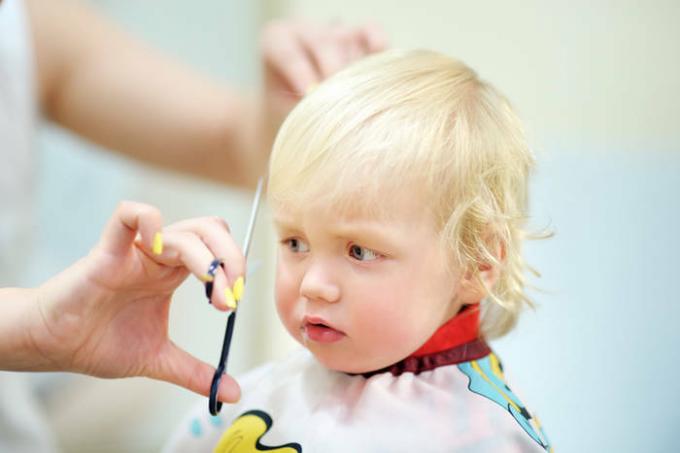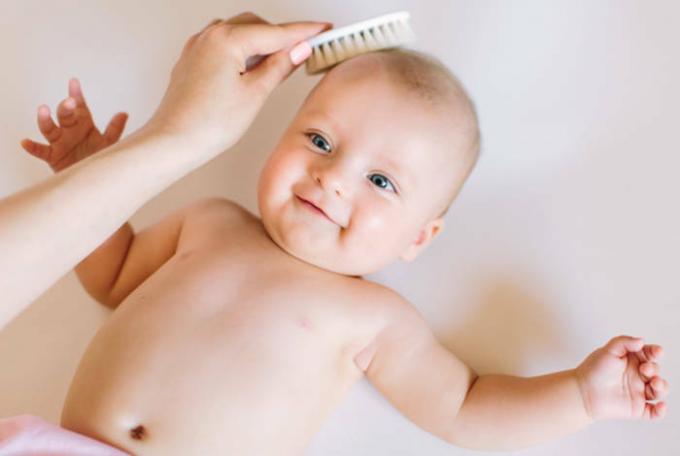The growth of hair in a child is associated with many facts. Which ones can we influence? Can baby hair be made thicker? How to accelerate hair growth without harming the baby?
When a baby is born, it is almost impossible to predict what his head of hair will be. During the first 5-7 years of life, a child's hair can change its color, structure and even density. However, parents often panic that the baby cannot boast of the same lush shock of hair as his peers. This is especially troubling for the parents of girls. We tried to figure out why a child's hair can grow poorly, how to cope with this problem and in what cases it is necessary to show the baby to the doctor.
Why does a child's hair grow poorly?

Blonde hair is thinner than dark hair and grows more slowly / istockphoto.com
There can be many reasons for poor hair growth in a child. And, unfortunately, not all of them can be influenced by parents. One of these reasons is genetics. If any of your family members (not necessarily you or your husband) had thin and thin hair, it is likely that the child simply inherited this phenotypic trait.
The second reason - intrauterine development of the baby. The laying of hair follicles occurs already in the first trimester of pregnancy, at 13-14 weeks. The first hair of the fetus (lanugo) appears at 5 months of gestation and usually falls out before birth. If during pregnancy the mother smoked or had serious infectious diseases (toxoplasmosis, rubella, herpes, chlamydial infections), this could affect the laying of bulbs or cause certain mutations in the genes that are responsible for hair growth.
The third reason is characteristics of the phenotype. Please note that the structure and type of hair directly depends on their color. It is believed that the thinnest hair is in blondes and owners of light blond hair, slightly thicker in brown-haired and brunettes, and even thicker in red-haired people. In the same way, hair color affects the dynamics of growth: blond hair grows more slowly, dark and red hair grows faster.
What does poor hair growth in a child say?

Up to a year, a child has every right to be practically bald / istockphoto.com
That being said, poor hair growth has reasons to deal with. The first is the simplest. it child's age. If you are worried that a one-year-old baby has not yet grown a violent head of hair, trichologists advise you to just wait. The fact is that in young children, the endocrine system is in the process of its formation. The endocrine glands (responsible for the hormonal background) finish forming only by the age of 7-8. So, most likely, in a year and a half, your child will change not only the color of the hair, but also their type and structure.
Also, a delay in hair growth in a child can cause stressand nervous disorders. For example, nervous tics in the baby, hyperactivity or, conversely, developmental delay, sudden mood swings, bouts of impulsive fear or some kind of phobia. In this case, you should not let the situation go by itself: after working with a neurologist and leveling the emotional background, the problem with hair often disappears.
Another reason for poor hair growth is some diseases. Their presence cannot be diagnosed independently, you need to consult a doctor. For example, rickets, already at an early stage, can cause hair growth retardation. To establish this disease and begin treatment, you need to take a blood test for calcium, phosphorus and alkaline phosphatase. Also, the baby may have malfunctions in the thyroid gland: here you need a blood test for TSH and consultation with an endocrinologist. Another problem is disruptions in the work of the gastrointestinal tract, which interfere with the absorption of nutrients from food (gastritis, pancreatitis, dyskinesia). They should be diagnosed by a pediatric gastroenterologist.
Products that improve hair growth

For hair growth, you need to eat foods rich in biotin / istockphoto.com
It also happens that the child's genetics, thyroid gland, hormonal levels and gastrointestinal tract are all right, but the hair grows out of hand at the same time. In this case, pay attention to what you feed him. Hair in our body is "financed" by nutrients on a residual basis. If the child as a whole does not receive enough vitamins and microelements necessary for lush hair, the hair follicles "go into hibernation" and hair growth slows down, or even stops altogether.
To "wake up" the follicles, it is necessary to ensure the intake of vitamins of group B, A, E, D, PP, calcium and phosphorus into the child's body. But the most important trace element is biotin (vitamin B7). For adults, there are pharmaceutical preparations with this vitamin, but giving them to a child is strictly prohibited. But you can increase the presence of this vitamin in food.
Leaders in biotin content include liver, meat, eggs, nuts (almonds, peanuts, walnuts), salmon, hard cheese and cauliflower. We remind you that it is not recommended to give hard cheese earlier than two years old: it is too fat for the immature enzyme system of the child. As well as nuts, which are also a strong allergen. Therefore, they can be introduced into the child's diet after 2 years and very, very gradually.
You will also be interested to read:
Haircut for a child a year old: what every mother needs to know
What can provoke hair loss in a child

